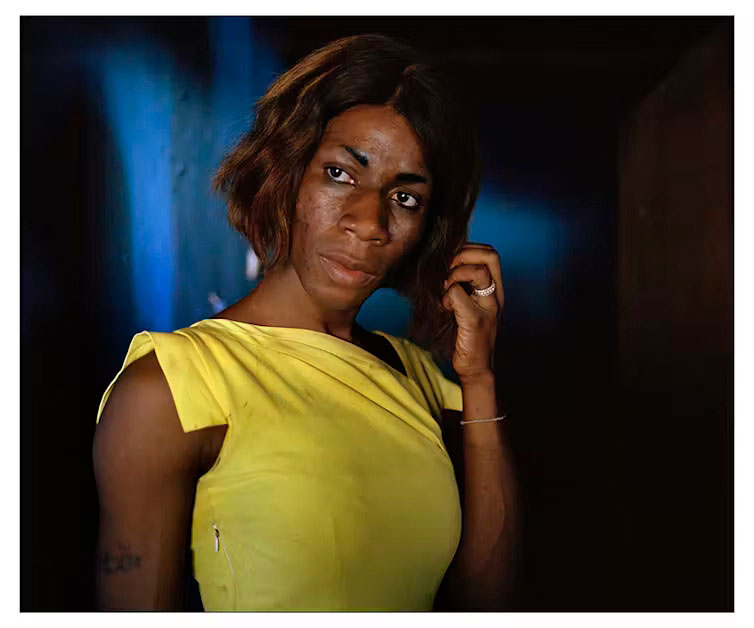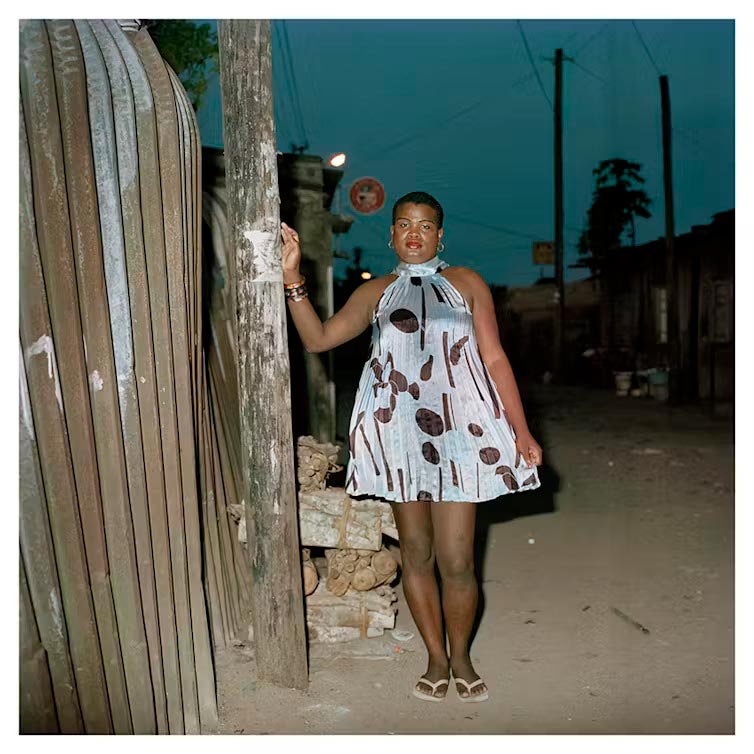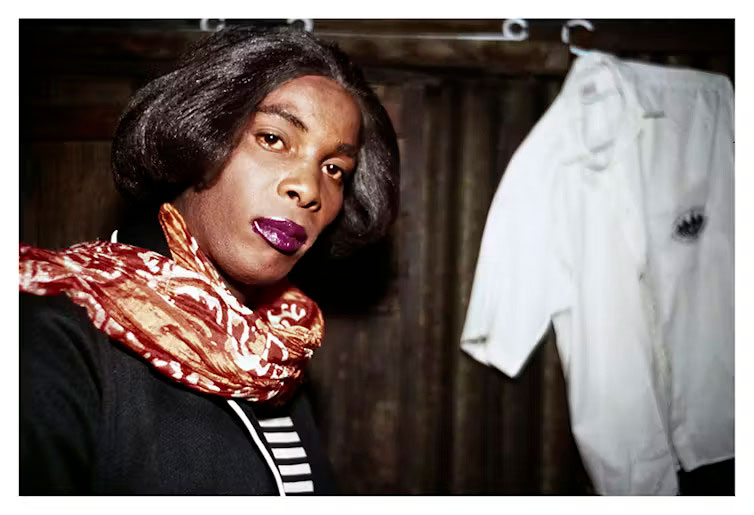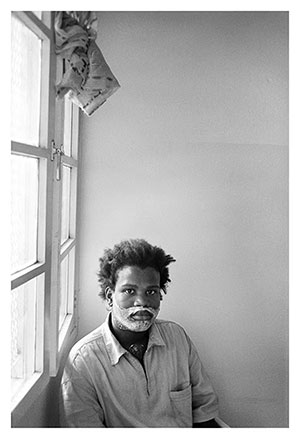Mozambique’s Transgender History on Display in a Powerful Photo Exhibition

A pioneering queer photo exhibition that was staged 20 years ago in Mozambique and South Africa has found new life and a new audience. Manas 2000-2024, by the Danish photographer Ditte Haarløv Johnsen, opened at the French-Mozambican Cultural Centre, in the capital Maputo, on 8 July.
The show kicked off Ulayo Fest, Mozambique’s annual LGBTIQ+ pride week. Held in July since 2021, this cultural event celebrates the power of the arts to bring about and reflect social change.
Many of the photographs on Manas 2000-2024 have been seen by the public before. Firstly, at the University of the Witwatersrand in South Africa, where they featured in an academic conference on sexuality in 2003. Then at Johnsen’s solo exhibition, Manas, held that same year at the Mozambican Association of Photography in Maputo.
As I discuss in a recent research paper, this work was one of the first public displays of LGBTIQ+ culture in postcolonial Mozambique. As a queer scholar working on LGBTIQ+ archives in Lusophone Africa, I first came across the Manas photo series in 2020, while doing research at the Gala Queer Archive in Johannesburg, South Africa. At Gala, I found various references to the 2003 shows. Today, the images have returned to Mozambique.

Sheila. Ditte Haarløv Johnsen
Through Johnsen’s unique gaze, the photographs invite the viewer on an intimate journey into Mozambique’s queer and transgender past. Having lived there for most of her childhood and youth, Johnsen conveys through her work a sense of both familiarity and strangeness. Her own status as a foreign white woman, she recalls, was what drew her to working with gender non-conforming people in the first place. They all felt, in a way, “out of place”.
The exhibition tells a story of becoming transgender, of not conforming to assigned gender roles. This is important because LGBTIQ+ people, and especially transgender people, are often denied rights and belonging on the basis of their presumed “newness”, their perceived lack of historical roots. By revealing this past, exhibitions like Manas 2000-2024 create a space for historical justice. The images allow us to imagine a history of Mozambique where gender non-conformity takes centre stage.
The manas
Mana (sister) is a common form of address in Mozambique, especially among women. Beyond its ordinary use in the streets of Maputo, the Portuguese word also carries a particular history. For some time, manas (sisters) has been the preferred form of self-identification used by Mozambicans who challenge strict gender roles, or whose sexual orientation is something other than “straight”.

Ingrácia. Ditte Haarløv Johnsen
Before other words – like gay, transgender, queer – existed and became popular, manas allowed individuals and communities to express who they were and how they lived. In its many uses, manas could encompass different ways of living: effeminate men, men who desired other men, or people who, having been labelled as men at birth, presented themselves socially as women, or felt like women inside.
By naming these desires and identities when no other word existed, manas opened a space for personal affirmation. But it also allowed for the building of a community that was resilient in the face of marginalisation and invisibility. Today, this community has its own name – LGBTIQ+ – and includes people who self-identify as lesbian, gay, bisexual, transgender, intersex and queer.
Who’s in the photos
Sitting at the very centre of the show are the famous Ingrácia and the late Antonieta, two Mozambicans who shook the streets of Maputo in the early 2000s. Back then, they lived in between social boundaries of gender and sexuality, sometimes identifying themselves as gay men, sometimes as women. Alongside their group of friends – Marcela, Rui, Júlia, Iben, Spiwa, Zaica, Alex – these two iconic figures left their mark in Mozambique’s queer history.

Antonieta. Ditte Haarløv Johnsen
As the self-proclaimed “great mother” of the LGBTIQ+ community in the country, Ingrácia also educated a new generation of manas over the years. Her “daughters” – Sheila, Liloca, Babi, Lenny, Kaká – today identify as transgender women. They are portrayed in more recent photographs, taken in a later stage of the Manas project, in the 2010s. Through the images, this younger community also shares its stories.
Then and now
A former Portuguese colony, Mozambique attained independence in 1975. In the early 2000s, the country was still digesting the after-effects of years of state socialism and of a civil war that had lasted until 1992. In the 1990s, the transition to multi-party democracy and to a market economy brought about new moral codes, consumer habits and urban cultures. The manas were a product of this rapidly changing context.

Ingrácia with beard. Ditte Haarløv Johnsen
Many of them, including some of those featured in the exhibition, are today highly visible and mobilised through civil society. Lambda, for instance, was created in 2006 as the first association for the defence of sexual and gender minority rights in the country. Since then, it has gained a strong national and international reputation.
In part due to Lambda’s advocacy work, Mozambique decriminalised same-sex relations between consenting adults in 2015. In 2019, a revision of the penal code outlawed discriminating against someone because of their gender identity. Today, within and beyond activism, LGBTIQ+ people in Mozimbique continue to live their lives. They love, they laugh.
Celebration and remembrance
The Manas series takes us through time, a living archive that is constantly being made and remade. When the photos were first shown in Maputo, many of the manas were present, and had the opportunity to appreciate their own portraits. Today, many of them are no longer with us. But a new generation is guided by their visibility.
By thinking of photography as an art in memory-making, the exhibition not only celebrates the lives of the manas, but also creates a space for mourning, for remembering those we lost. The show includes a shrine-like installation to honour the fallen – in particular Antónia, who was found murdered in Maputo in 2022. A photograph does not let us forget.
This article by Caio Simões de Araújo, Postdoctoral Curatorial Fellow, Centre for Humanities Research, University of the Western Cape, is republished from The Conversation under a Creative Commons license. Read the original article.
![]()
Leave a Reply